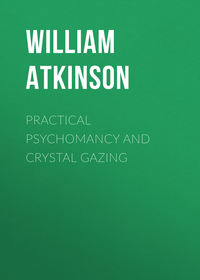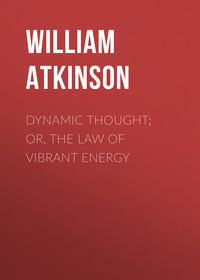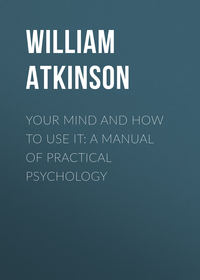
Practical Mind-Reading
Beginning your entertainment, caution the audience about placing the hidden objects in places that you cannot conveniently touch – such as high up on the wall; under the strings of a piano, etc. Tell them that you can find the article anywhere, but it must be placed so that you can get at it with only ordinary care and work. Some "Smart Alicks" may try to play pranks on you in this way, but discourage same vigorously at the start, informing the audience that this is a scientific test and not a circus. And, remember this, tell them that the article must never be hidden about the Transmitter, for the reason that he is seldom able to think as intently about his own location as about some place away from him. These are the only restrictions that you need make. Caution the Transmitter to guide you away from obstacles over which you might stumble, or which you might overturn. Tell him that you place yourself in his hands for protection, and then endeavor to think no more about the matter, for such thought tends to distract your passivity.
The above feats or demonstrations are all performed along the same general lines as indicated a little further back, and all are capable of being accomplished by anyone of ordinary intelligence, with a little study, care and practice. Practice makes perfect, in Mind Reading as in everything else, remember, so keep at it until you have worn off the rough edges, and have polished up the details of the work. You may vary, improve, add to, the above feats, and may also insert many new ones for yourself as you proceed with your work. Use your inventive faculties.
THE WIRE CONTACTA sensational and effective method of performing some of the simpler feats is performed by some public performers, and consists in having a piece of thick wire, about one foot in length grasped by the Receiver's left hand, and by the Transmitter's right hand, instead of the ordinary contact. A little practice will surprise you in the facility in which the impressions are transferred over the wire from the Transmitter to the Receiver. The methods of operation in this case are identical with those employed in the ordinary methods. A wooden "ruler" may be substituted for the wire. Some performers succeed even with a long walking-cane.
THIRD PERSON INTERPOSEDAnother variation is that in which a third person is interposed between the Transmitter and Receiver. Practice along these lines will enable the skilled Mind Reader to receive the impressions as usual, notwithstanding the interposition of the third person. Do not attempt to try these variations until you have thoroughly mastered the ordinary methods.
(The student is here advised to turn to the conclusion of Lesson VI, of this book, and acquaint himself with the "Simpler Method" there described. It may help him in this phase of his work.)
We shall now pass on to the consideration of some of the more complicated or difficult feats of Contact Mind Reading.
LESSON VI.
DIFFICULT DEMONSTRATIONS
We shall now direct your attention to a class of demonstrations of a rather more complicated order than those related in the last chapter. But even these difficult feats may be rendered comparatively easy of accomplishment by careful practice, and development of receptivity.
PRELIMINARIESIn these experiments or demonstrations the Transmitter stands by your left side, you grasping the fingers of his right hand in your left hand, and holding as in the case of the former experiments, i.e. either with his hand pressed against your head, or else held out and up, as before described. You receive the impressions in the same way. The following demonstrations may be performed after a little private practice, so as to be shown at a public performance almost as easily as the simpler feats heretofore described.
DISCOVERING THE CARDDEMONSTRATION I. Spread a number of cards over the table. Then retiring from the room, have the audience select one card of the number, which the Transmitter must be sure to remember distinctly – that is the Transmitter should remember just where the card is, the position being the important feature, rather than the name of the card. Then taking the Transmitter's hand as above described, you should move your right hand to-and-fro over the table, moving it backward and forward, and in circles. You will soon find that this feat closely resembles the one of the last chapter in which you find small objects; the pin hole, etc. You will soon find that the impressions tend to centre over a certain spot on the table. Begin to lessen your circles and hand movements until you gradually centre over this spot. Then slowly lower your fingers until you touch the card resting on the said spot, when you will be sure that you are right, when you must pick up the card and exhibit it to the audience. The same indications mentioned in the feats of the last chapter will be felt by you. You will feel the "No, no!" impression when you are wrong, and the "That's right" impression when you are moving in the right direction, until at last you will distinctly feel the relaxation of the mental urge, which you will have learned to translate into "Right you are!" when you finally touch the right card. This feat is really no more difficult than the one in which the small object is found, and we have included it in the list of "Difficult Demonstrations" simply because it is practically a "connecting link" between the two classes of demonstration, as you will see as we proceed.
THE CHECKER MOVEDEMONSTRATION II. This is akin to the last experiment. Have a checker board arranged by some of the audience who understands the game. Then let some one decide on the next move. Be sure that the Transmitter thoroughly understands the piece to be moved, as well as the place to where it is to be moved. Then, proceeding as above indicated, first find the piece to be moved, and then move it to the proper place. This feat consists of two parts, you will notice. The finding of the piece is like the finding of the card. Then with the piece grasped between your thumb and forefinger, make a small circular and backward and forward movement, until you feel the mental impression of "There!" when you will place your piece directly on the spot. This may seem difficult, and appears so to the audience, but you will find by a little private practice that it is really as easily performed as some of the simpler tests.
THE GAME OF CARDSDEMONSTRATION III. Similar to the above is the feat known as the "Game of cards." Two players sit opposite each other at a table, having dealt themselves two hands of euchre. Have the Transmitter lead you behind the first player, and standing there have the player silently point out the card he wishes to lead, to the Transmitter. The Transmitter then should concentrate his mind on the card, and you will find it in the usual manner, and having found it will play it on the table. Then leading you around to the other player, the Transmitter repeats the process, and you find and play the card. Then back to the first play, and repeat. Then alternate between the players, in the same manner, until you have played out the game. This may be improved upon by the Transmitter thinking of which player has won the trick, when you will push the cards over to the winner, having discovered the direction in the usual manner. This feat is very effective indeed when properly performed.
THE MAPPED-OUT TRIPDEMONSTRATION IV. Have a map laid open on the table, and have the audience decide upon a trip between two points, either by rail or by water. Then returning to the room, stand as above described, and with your forefinger find the place from which the trip starts. Then move slowly along the selected course in the same manner in which the checker-game was played, passing along the chosen route until the end is reached. These feats are all really variations of the one principle.
THE PACK OF CARDSDEMONSTRATION V. This is a very effective feat, and requires some little skill and practice, but there is no reason why any careful, patient, and persistent student should not be able to master it. It consists in the audience selecting any given card from the pack, and then replacing it with the others, being sure that the Transmitter is familiar with the card chosen, and knows enough about cards to recognize it when he sees it again. Then the pack of cards should be placed on the table, face up. Returning to the room, you take the Transmitter's hand as usual, and with your right hand pick off the cards from the pack, slowly and one by one. As you pick up each card, slowly weigh it in your hand, so to speak, and then place it aside if you receive no "stop" orders from the mind of the Transmitter. Having previously practiced this feat in private you will have learned that peculiar "heavier" sensation that comes to you when you lift the right card from the pack, so that when you finally reach it you will know it. We cannot describe just what this sensation will feel like – you must learn it by actually experiencing it in private practice. We advise you to diligently practice this feat in private, for it is wonderfully effective. You will find that after a bit of practice you will be able to get the "heavy" feeling when you lift up and "weigh" the right card. You should perform this feat slowly, and carefully, shaking your head, "No," just before you discard a card. If by the lack of concentration of the Transmitter, you fail to feel the "heavy" feeling when you pick up the right card, the shake of the head will be apt to arouse him to exert his Will more actively, and you will receive the "hold on" impulse immediately. Do not be in too much of a hurry to discard, but make several feints at it before finally letting go. This feat may be improved by having the audience select a "poker-hand," such as a "flush," a "straight," "three-of-a-kind"; a "full-house," etc., etc., and having you find the hand one card at a time. This latter is a fine effect, and always brings down the house. But be sure that your Transmitter really knows and remembers the cards, else the feat will fail, of course. He must remember each card, and recognize it when it appears face up on the pack before you, as you proceed with the discarding. Never attempt this feat in public without previous careful, private, practice, for it requires the most delicate perception and skill. If you find that you cannot master it to your satisfaction, after sufficient practice, you may try it by the "Simpler Method" given at the conclusion of this Lesson.
THE CHOSEN WORD IN THE BOOKDEMONSTRATION VI. Like the last feat, this is a complex and difficult one, but one that always arouses enthusiasm in an audience when well performed. It will repay you for the private practice that you will have to employ upon it, before you produce it in public. The feat consists of the audience selecting a book from a pile, or a book-shelf, or book-case, etc. – then a given page is chosen – then a line of printed matter on that page – and then a word in that line. It is well to have the Transmitter draw a pencil circle around the chosen word, so that he may be sure to remember it later. The book is then replaced on the shelf. Then returning to the room, you first find the book, by the methods already given in previous feats; then laying it flat on the table you should begin to slowly and deliberately pick each leaf up separately. This part of the feat is almost identical with the last one, in which you picked up the cards from the pack. When you get the proper impression, you should announce that you have found the leaf. If satisfied that you are right, ascertain upon which side of the leaf, the chosen page is. This can be done by pressing the leaf to the right, or left, in succession, until you get the right impression as to which way to press it down. Then, having thus found the page, pass your finger slowly down and back over the page several times, until you get the impression of a centre. This centre will be the chosen line. Then by passing the finger slowly along the line, you will discover the Word when you reach it. This is a "ticklish" feat, but it may be mastered by practice – in fact some people have found it almost as simple as some of the easier feats, while others require careful practice with it. Do not be discouraged if you do not succeed at first trial, even in public, but try again, and after a bit you will seem to "get the knack" all at once, and thereafter will have but little trouble in making the demonstration. If you find that you do not meet with the desired degree of success in this feat, try it by the "Simpler Method" given at the last of this part of the book. But do not give it up without the proper practice. If you have carefully performed the previous feats, you should have so developed yourself by this time that you should have no special difficulty in this feat.
BLACKBOARD DEMONSTRATIONSThe following feats may be performed either upon a large blackboard hanging from the wall, or upon a large sheet of card-board, or stiff paper, spread upon the table. If the blackboard is used, you should stand before it, the Transmitter standing in the usual position. If the table is used, you should stand before it, the Transmitter in his usual place.
DRAWING THE CHOSEN FIGUREDEMONSTRATION VII. Have the audience select a number, and think intently of it. Impress upon the Transmitter that is to think of the Shape of the figure instead of merely remembering its name. For instance if the figure "8" is thought of, the Transmitter should think of the Shape of the figure, and not of the word "eight." Then begin to circle your hand around over the blackboard just as you did when finding the place of the "beginning of the trip" of the demonstration mentioned a few minutes ago. Then bring your pencil or chalk to a starting point, which you will soon perceive. Then hold your fingers pressing lightly forward, and impart to your hand a trembling vibratory motion as if in hesitation regarding the next movement, saying at the same time to your Transmitter: "Will Hard now – Will the Direction to me," and you will soon begin to get an impression of "Right," or "Left," or "Down," as the case may be, which you should follow slowly. Be slow about it, for if the impression is not right you will soon be checked up. Fence around a little until you begin to get the impressions clearly. You will find that the principal trouble is at the start, for once you are started on the right track, your Transmitter's Will will be freely employed, and he will pour the impressions into you. Let him feel that it is his Will that is really doing the work, and he will exert it freely. Once started, these drawing feats are easily performed, the trouble being with the start. You should practice this feat frequently in private, before attempting it in a public demonstration. It is very effective.
THE LADY'S AGEDEMONSTRATION VII. This is a variation of the above feat. A lady in the audience is asked to whisper her age in the ear of the Transmitter, and you are to draw it on the board or paper. The feat is performed precisely in the manner described above, the Transmitter being cautioned to think of but one figure at a time during the drawing.
THE BANK NOTE TESTDEMONSTRATION IX. Akin to the last two feats, is the reading of the number of a bank-note held in the hand of the Transmitter. It is performed in precisely the same manner as the preceding feat. Be sure to have the Transmitter understand that he is to think of but one figure at a time, until it is drawn, and then the next, and so on.
THE WATCH NUMBER TESTDEMONSTRATION X. The feat of reading and drawing the number of a person's watch is a variation of the last mentioned demonstration, and is performed in precisely the same way.
THE GEOMETRICAL FIGURE TESTDEMONSTRATION XI. Have the audience select some simple geometrical figure, such as a square, triangle, circle, right angle, etc., and proceed to draw it in the same way as the figures in the demonstrations just described. Have the Transmitter hold the figure in his mind and mentally draw it as you proceed. A little private practice will enable you to draw these figures easily, and in fact, they are really simpler than numbers, although more startlingly effective at times.
DRAWING PICTURESDEMONSTRATION XII. The same principle described in the above mentioned test may be extended to apply to the drawing of simple pictures, such as the outline figure of a pig, etc. The copy is placed on the table or blackboard, so that the Transmitter may easily refer to it, and then you proceed as in the feats above mentioned. Practice this until you "get it down fine."
THE HIDDEN NAMEDEMONSTRATION XIII. The same principle may be extended to the writing down of the name of a person, town, etc., previously chosen by the audience. Draw in large letters, so that the eye of the Transmitter may easily follow you at each step.
THE UNDERLYING RULEIn all of the "Drawing Demonstrations," you should remember the primary principle, i.e. Follow the line of the least Mental Resistance, and the Will of the Transmitter will invariably lead you to the right direction.
THE "SIMPLER METHOD."A simpler method of performing the feats and demonstrations which we have styled "The More Difficult Feats," is that of having the Transmitter stand by your right side, turning toward you and placing his right hand over yours, the tips of his fingers resting on your fingers between your large knuckles and first joints, (instead of standing on your left side with his fingers grasped in your left hand, as heretofore mentioned). This method is not nearly so good so far as appearances go, for some critical members of the audience might object that he was in confederacy with you and really helping you to draw – but it is highly effective so far as simplifying the feat is concerned. His finger-tips with their nervous matter aroused into activity seem to fairly charge your fingers with "nervous energy," or "magnetism," and your hand acts almost automatically. The motion of the Receiver's hand and fingers, under this method becomes almost like the motion of a "Planchette," and often writes and draws the numbers, figures, letters, etc., so easily and smoothly, that they seem to be fairly "running away" from the mind of the performer. You should at least familiarize yourself with this method, so as to be able to use it in emergencies, or in the case of a poor Transmitter, or else in the case of the more delicate and complex tests. If you neglect this method, you will have failed to acquaint yourself with one of the most startling features of Contact Mind Reading, which so far touches the higher phenomena that it is closely akin to what is known as "Automatic Writing." In fact, if you are disposed, and are naturally receptive and sensitive to impressions, you may even write a letter through the Will of a good Transmitter, by this method. By all means make yourself acquainted with its possibilities, and phenomena.
We now pass on to a consideration of the more Sensational Feats.
LESSON VII.
SENSATIONAL FEATS
In addition to the feats given in this work, which, together with their countless variations, form the stock in trade of the majority of the professional Mind Readers, there are a number of other feats essayed by the public performers which we have seen fit to group under the general title "Sensational Feats." These feats are described here in order that the student may understand the nature of them, and the manner of their performance. But we consider such feats suitable only for the sensational advertisements of the professional performers, and always dependent upon more or less spectacular accessories, and attended by even dangerous features in the case of the driving feat. And therefore we do not offer them for reproduction by the private student, or the parlor demonstrator. The principal Sensational Feats performed by the professionals, are as follows:
THE DRIVING FEATThis is performed by the performer, blindfolded as usual, driving a team along the public streets to some selected point, which point is usually a hotel previously selected by a public committee. Upon reaching the hotel the performer goes to the hotel register, turns the pages and finds a name previously selected. The performer receives his impressions from members of the committee who are seated beside him on the carriage seat, with their arms on his shoulders, or having hold of his hands, or even connected with him by wire. The feat is really a spectacular reproduction of the familiar feats described in previous chapters, and the principles governing it are precisely the same. The Transmitters impress the direction upon him, and he follows the line of the Least Mental Resistance.
THE COMBINATION LOCK FEATThis feat is employed either separately, or in connection with the Driving Feat. It consists in the performer opening the combination safe of a hotel or some business establishment. In this case the Transmitter must know the combination perfectly, and his mental impressions acting upon the performer give him the cue to turn "right" or "left" or "repeat" as the case may be. Of course one must have cultivated a great degree of sensitiveness to mental impressions before he will be able to receive and respond to the direction impressions in this case. And yet almost any person by following the directions given in this work, and carefully and repeatedly practicing the various feats and demonstrations given herein, may be able to reproduce this feat of the professional performer, who is in constant daily practice, and who is able to devote his entire time to the work, as his "bread and butter" is concerned therein. Once the sensitiveness is gained, the details of the work are nothing more than those employed in any of the "finding" or "drawing" feats herein described and explained.
THE OFFICE DETECTIVE FEATIn this feat the public committee picks out an object on the desk, or about the office of some one of its members, the office being located some distance from the place of meeting. The performer then rushes along the public streets, dragging the Transmitter with him, until the office is reached, then up stairs, and into the room selected, and up to the desk, or other place, and lo! the object is found. Divesting this feat of all its sensational features, the student will see that it is merely a variation of the ordinary "finding" feat performed in the parlor. It creates a great sensation, but there is nothing more wonderful about it than about the simplest "finding" feat.
THE POSTOFFICE FEATAnother feat favored by some of the professional performers is that of having a letter placed in a post-office lock-box, the key of which is given the performer at a point some distance from the post-office. Rushing through the public streets, dragging the Transmitter with him, the performer finds the post-office in the usual way, and then locates the lock-box, into which he inserts the key and extracts the letter, thus triumphantly completing the feat. This feat, as every student will see, is merely a variation of the simpler feats manifested in a sensational manner for the purpose of public advertisement.
THE FIRE-ALARM FEATThis feat is another "free advertisement" demonstration, in which the performer, with the permission of the city officials, discovers the location of a certain fire-alarm box, and turns on the alarm with the key which had been previously loaned him. Some public officials allow this test to be performed, using it as a test alarm for the department as well, and the sight and sound of the clanging fire-engines, the smoke, and confusion following upon the sensational Mind Reading demonstration is calculated to cause great excitement and interest in the town, which usually results in packed houses at the night entertainment. But the test is really nothing but a variation of the simple "finding the spot" demonstration, with sensational accompaniments.
VARIATIONSWe might enlarge our list of "Sensational feats," but to no real benefit to the student, for they are all cut from the same cloth, and are but "improvements" upon the simple parlor feats. If the student wishes to do so, he may invent a dozen similar feats, just as sensational and just as effective. The purpose of the sensational feat is primarily to gain free advertisements for the public performers. As scientific demonstrations they have but very slight value.
"FAKE DEMONSTRATIONS" EXPOSEDIn concluding this part of the book, we wish to warn our students against some of the so-called "Mind Readers" who are travelling around the country giving exhibitions of so-called Mind Reading which while interesting enough in themselves are nothing but cleverly devised devices intended to counterfeit the genuine phenomena. The majority of these performers have a series of cleverly arranged "signal-codes" by which the confederate conveys to the "Mind Reader" the name and description of the article handed to the former by some one of the audience. One of the principal performers in this line in this country had a signal-code of over five-thousand objects, which he and his confederate had carefully memorized. This code was worked by the plan of asking the blindfolded "Mind Reader" to name the object. You can see the possibilities of this when you remember the many different ways in which the same question may be asked, and when you remember that each word, and combination of words, conveys a distinct and separate meaning to the blindfolded one.









